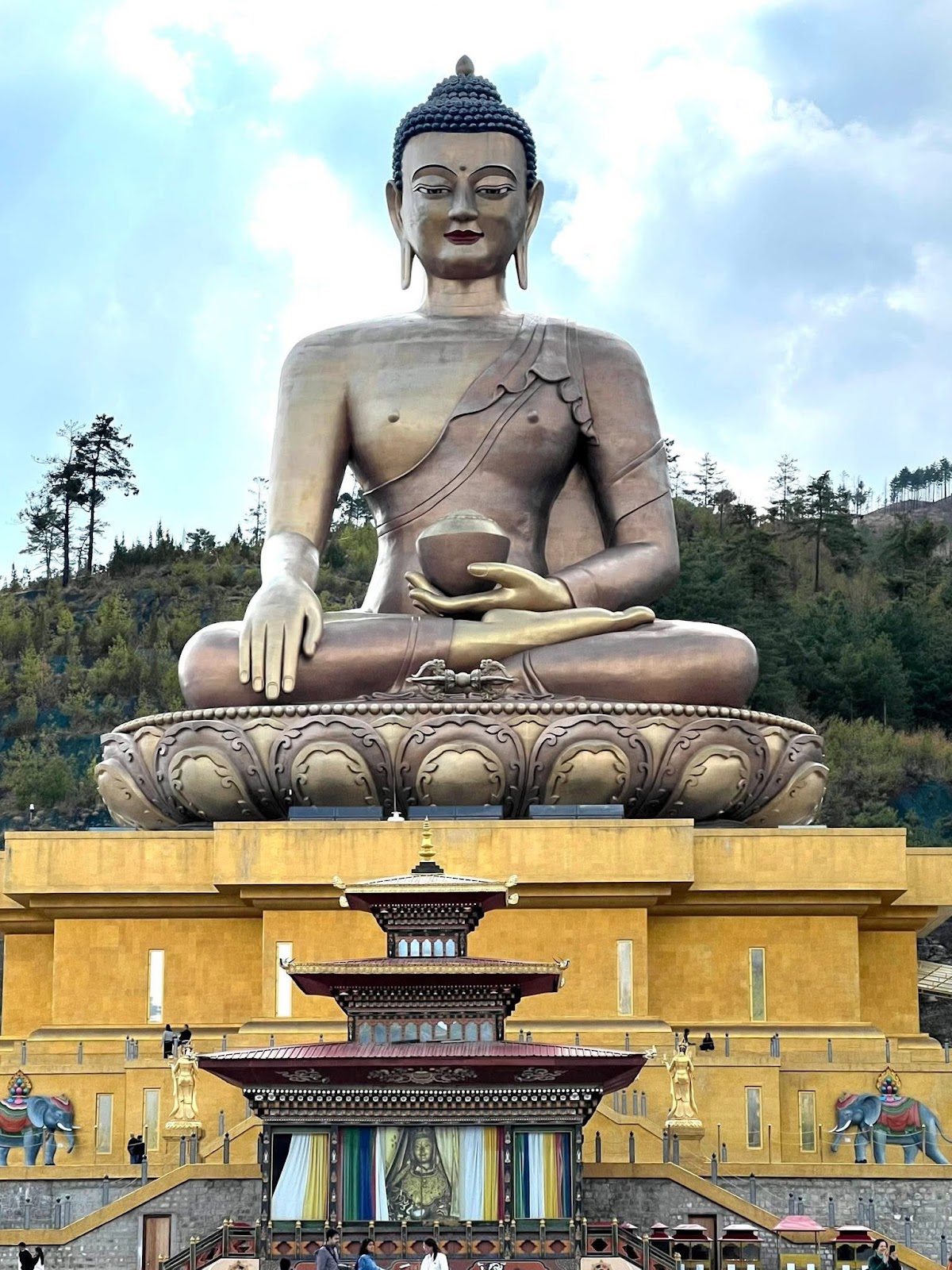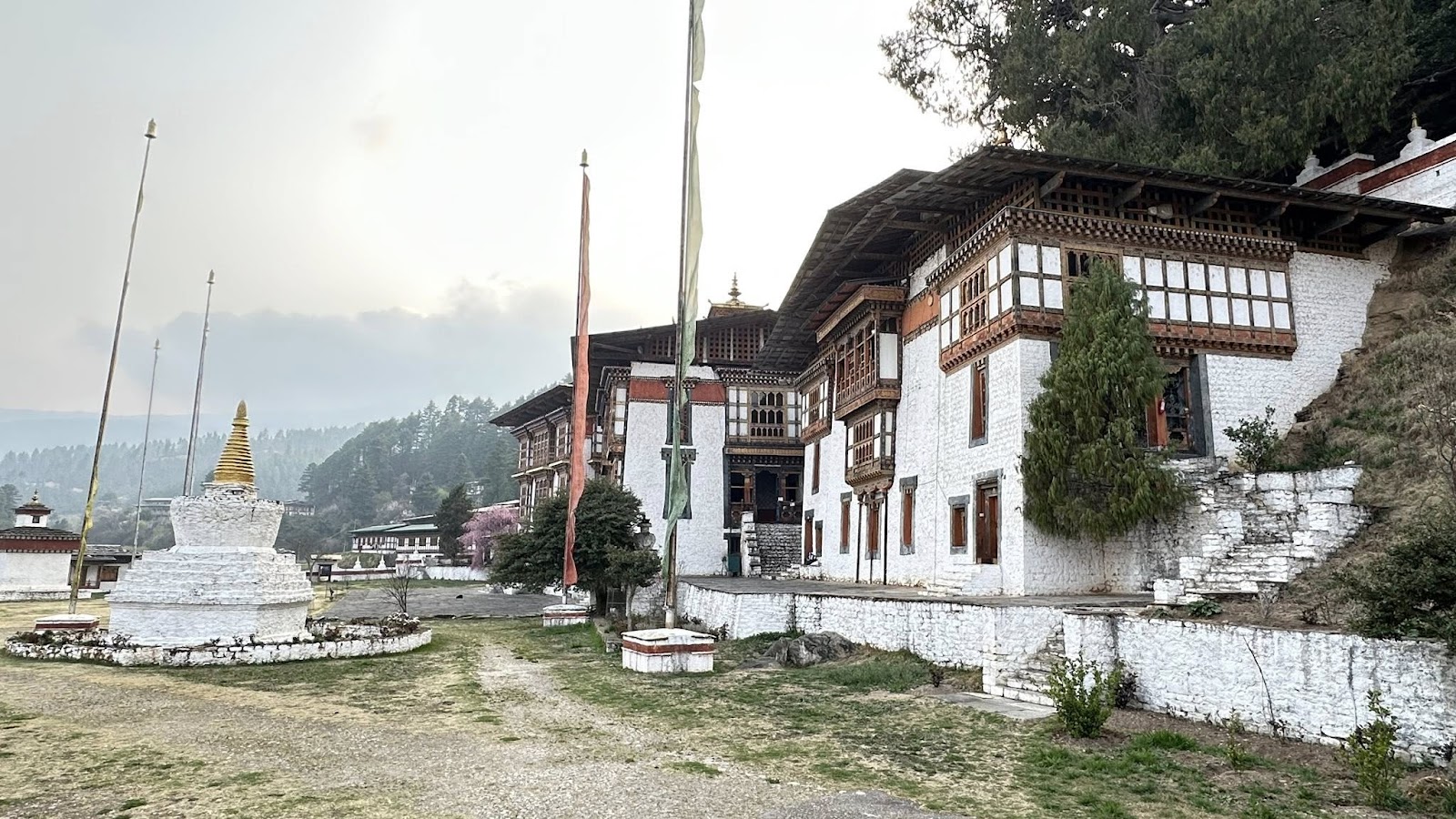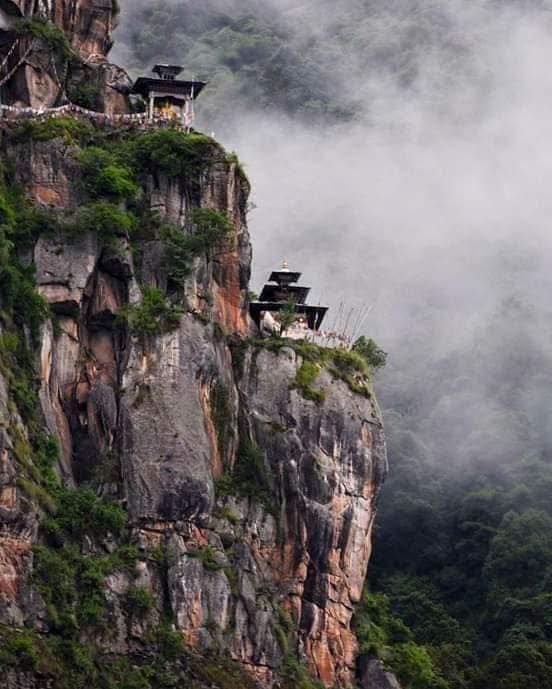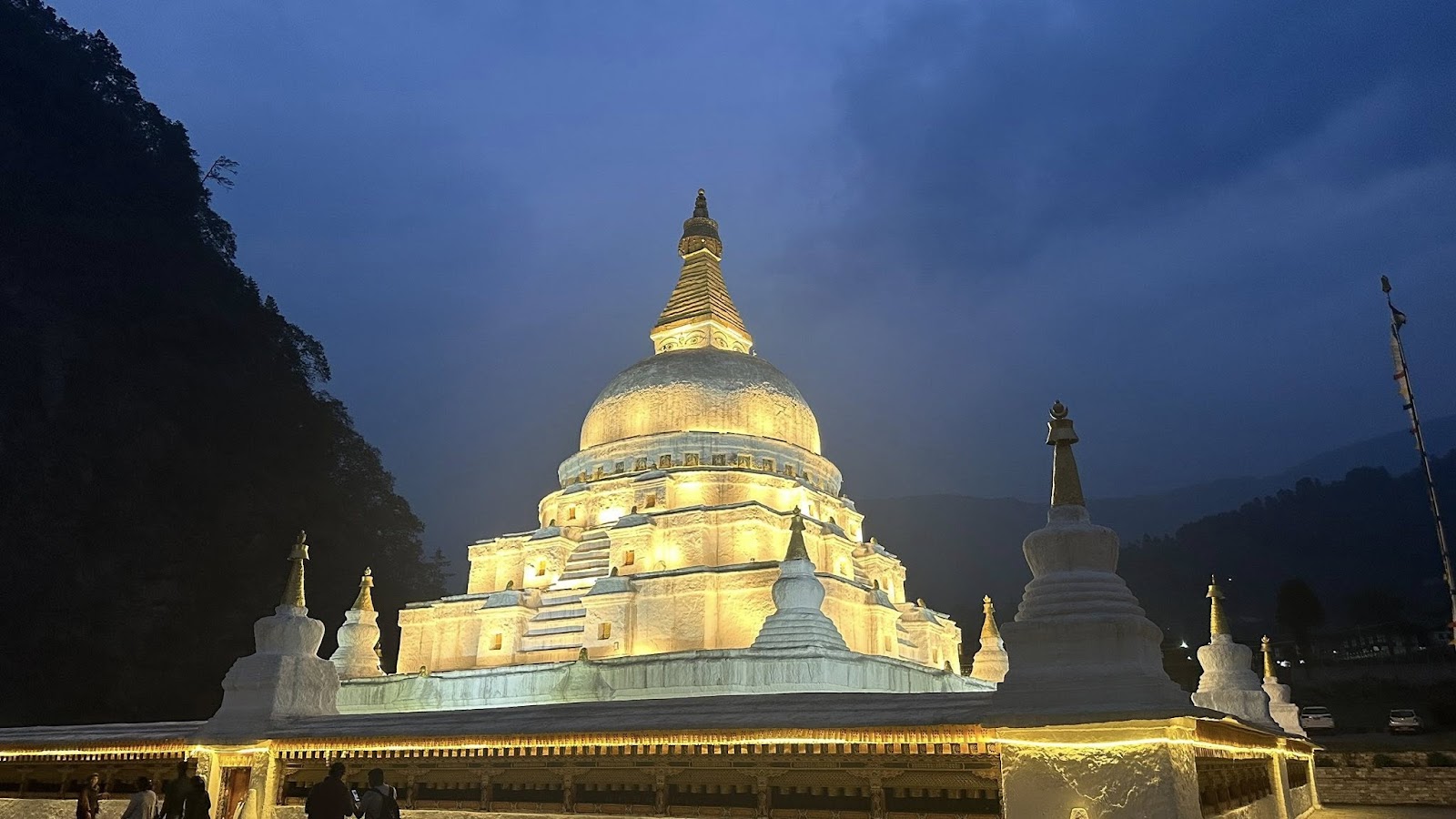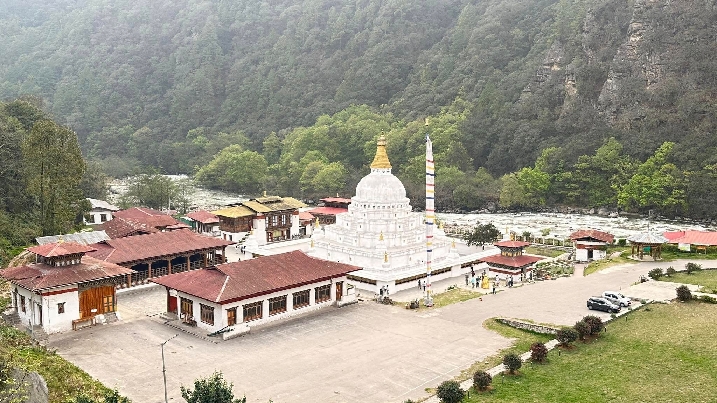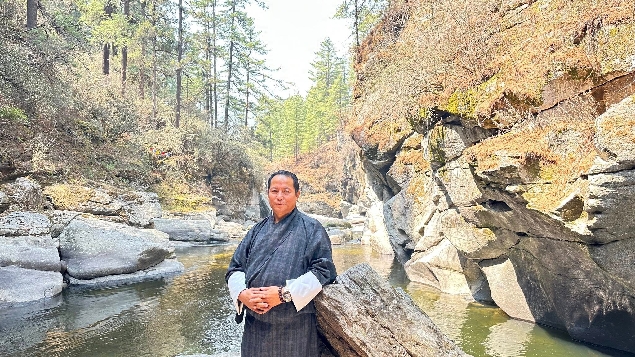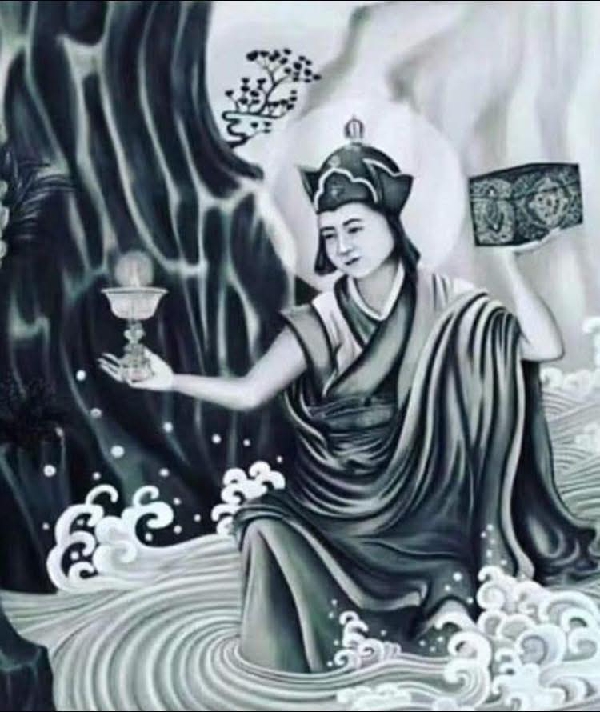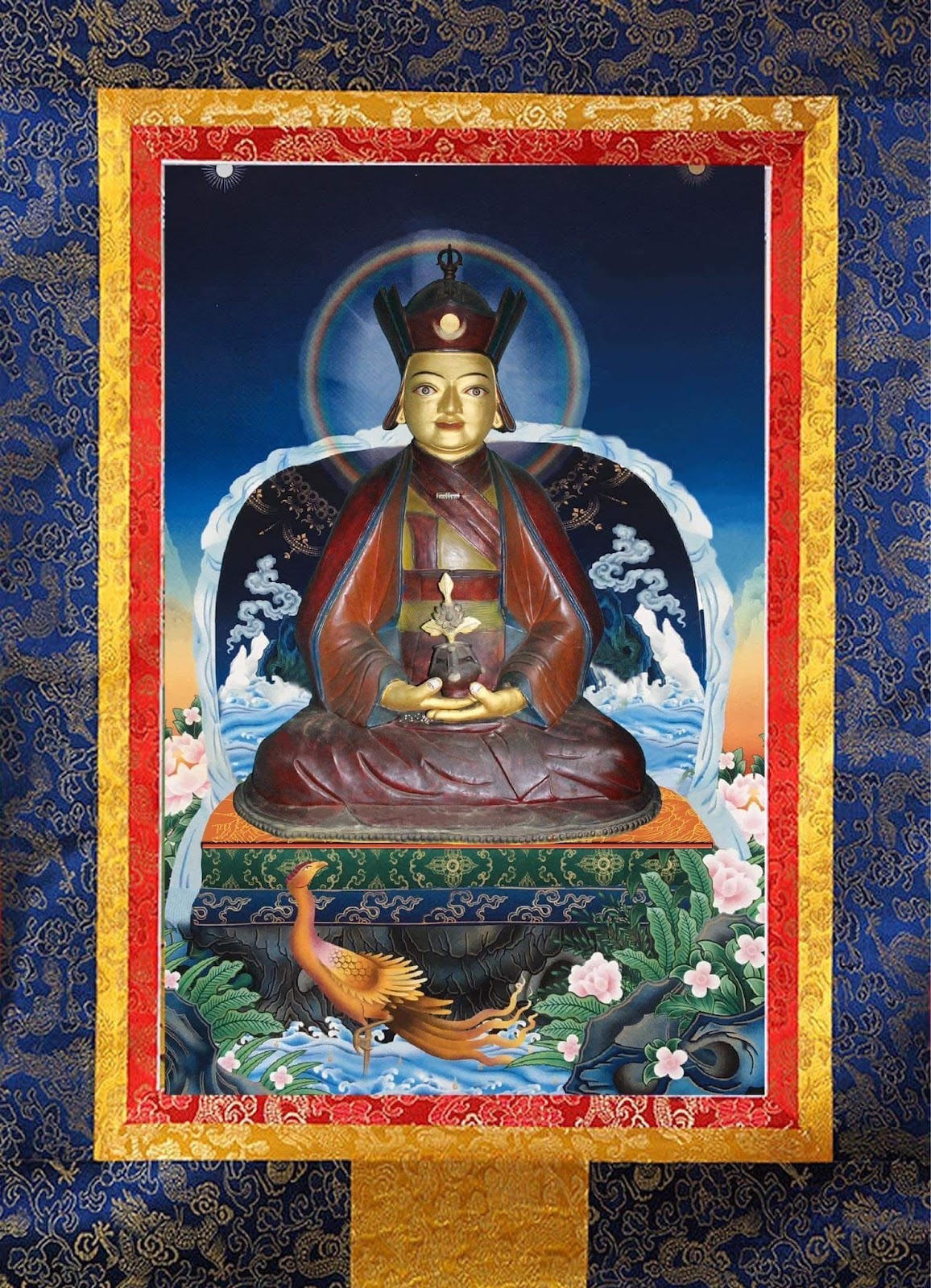Nestled deep within the central highlands of Bhutan lies Bumthang, often
referred to as the spiritual heart of the kingdom. With its pristine valleys, centuries-old temples, and mystical charm, Bumthang isn’t just a destination—it’s an experience. For spiritual seekers and history enthusiasts alike, it holds the promise of something more profound.
On this visit, my journey led me to Tamzhing Lhundrup Monastery, a place I had long heard about and deeply revered from afar. Founded in 1501 by the legendary Terton Pema Lingpa, Tamzhing is not only a historical treasure but a living spiritual center, rich in relics, mysteries, and blessings that transcend time.
As I arrived at the monastery, a sense of quiet reverence filled the air. Though modest in its architecture, the complex radiates spiritual energy. Prayer flags fluttered in the wind, sending prayers across the valley. The soft sound of young monks reciting scriptures in their classrooms only added to the beauty and serenity of the place.
I was finally at the doorstep of a sacred sanctuary that embodies centuries of devotion and spiritual practice—a monastery blessed by the presence and craftsmanship of one of Bhutan’s most revered spiritual masters, Terton Pema Lingpa.
𝗟𝗲𝗴𝗮𝗰𝘆 𝗼𝗳 𝗮 𝗧𝗿𝗲𝗮𝘀𝘂𝗿𝗲 𝗥𝗲𝘃𝗲𝗮𝗹𝗲𝗿
Terton Pema Lingpa, born in Bumthang in 1450, is revered as one of the greatest tertons (treasure revealers) in the Nyingma tradition of Tibetan Buddhism. Entrusted with discovering sacred teachings hidden by Guru Rinpoche (Padmasambhava) centuries earlier, Terton Pema Lingpa dedicated his life to spiritual awakening and cultural enrichment. His terma discoveries shaped the spiritual fabric of Bhutan and remain integral to Bhutanese identity.
Tamzhing Monastery was his seat—a place where he taught, revealed treasures, and crafted sacred art and architecture with his own hands.
𝗔 𝗦𝗵𝗿𝗶𝗻𝗲 𝗟𝗶𝗸𝗲 𝗡𝗼 𝗢𝘁𝗵𝗲𝗿: 𝗧𝗵𝗲 𝗚𝘂𝗿𝘂 𝗥𝗶𝗻𝗽𝗼𝗰𝗵𝗲 𝗦𝘁𝗮𝘁𝘂𝗲
At the heart of Tamzhing Monastery lies a shrine that holds one of Bhutan’s most extraordinary spiritual treasures: a unique statue of Guru Rinpoche, revered not only for its sacred presence but also for the miraculous story of its creation.
Housed in the main lhakhang (temple), this statue is considered one of the oldest surviving Guru Rinpoche statues in the world. While many ancient images in Tibet were destroyed during periods of unrest, Tamzhing's statue has endured, quietly preserved within the protective embrace of the Bumthang valley.
Unlike most relics, this statue is said to have been personally constructed by Terton Pema Lingpa himself. According to oral tradition, he worked on the statue diligently but retired for the night before completing it. In the quiet hours, Dakinis—enlightened female beings—descended from the sky and completed the statue. As the sun rose, they vanished, leaving the statue unfinished without a hat.
The next morning, Terton Pema Lingpa crafted a hat based on his own head, but due to his modest stature, the hat turned out too small for the statue. Today, visitors can still see the slightly undersized hat—a humble reminder of the master’s devotion.
Another remarkable feature is the statue’s gaze, which is lifted upward. It is believed that as the Dakinis flew away, the statue turned its gaze heavenward to follow them—a moment forever captured in its expression.
Crafted with spiritual intent and surrounded by Guru Rinpoche’s two consorts—Khandro Yeshey Tsogyal and Khandro Mandarava—and his eight manifestations, the statue is a complete spiritual mandala in form.
We were then escorted upstairs, where the blessings continued. The upper floor forms a balcony around the assembly hall, and it is said that Terton Pema Lingpa built the low ceiling to match his own height. Surrounding the balcony are 100,000 ancient paintings of Sakyamuni Buddha.
In the upper chapel is a statue of Tsepame, the Buddha of Long Life, and a large collection of ceremonial masks used in sacred dances. Also housed here, though off-limits to visitors, is a statue of Terton Pema Lingpa said to have been fashioned by the master himself.
𝗧𝗵𝗲 𝗦𝗮𝗰𝗿𝗲𝗱 𝗥𝗲𝗹𝗶𝗰𝘀 𝗼𝗳 𝗧𝗮𝗺𝘇𝗵𝗶𝗻𝗴 𝗠𝗼𝗻𝗮𝘀𝘁𝗲𝗿𝘆
We had the rare and profound opportunity to receive blessings from the Nangtens (sacred relics) preserved at this revered site. One of the most sacred items is a small, rectangular box carefully sealed by His Majesty the Fourth Druk Gyalpo. Inside are treasures revealed as terma by Terton Pema Lingpa:
· A cup used by Guru Rinpoche and Khandro Yeshey Tsogyal
· A 4-inch terma statue of Jetsun Dolma (Tara), revealed from Tang Mebar Tsho
· A nine-pronged dorje made by Damchen Dorje Lekpa, retrieved from Mebar Tsho
· A 6-inch statue of Avalokiteshvara with a Buddha at the crown, also revealed from Tang Mebar Tsho
· A statue of Zambala, retrieved from Tibet
· Sacred tummo practice scriptures handwritten by the 5th Thuksey Rinpoche
· An emerald once worn by Lhachen Pemasel
· A sandalwood seal of Guru Rinpoche
· A statue of Dusum Khyenpa, the 1st Karmapa, presented by the 7th Karmapa Chödrak Gyatso to Terton Pema Lingpa
· A five-pronged dorje that miraculously manifested in Terton Pema Lingpa’s hand, as seen in a dream
· A small bag woven with gold and silver thread, containing two norbu (wish-fulfilling jewels), revealed as terma.
Following the explanations of each sacred object, we received the blessings of the sealed box—an experience that left us spiritually uplifted and deeply humbled.
Terton Pema Lingpa was known for leaving treasures near their place of discovery. For example, items retrieved from Kourte were kept in Kurete, honoring the sacred energy of place and so on and so forth.
𝗢𝘁𝗵𝗲𝗿 𝗦𝗮𝗰𝗿𝗲𝗱 𝗧𝗲𝗿𝗺𝗮𝘀 𝗮𝘁 𝗧𝗮𝗺𝘇𝗵𝗶𝗻𝗴
Beyond the sealed box, we were able to view additional rare termas, including:
· A magnificent statue of Guru Tsokhor Sum, of unknown origin but immense spiritual value. Rinpoche himself sought blessings from it before long journeys
· Tandin Powa Chepa (a form of Hayagriva)
· A Guru Rinpoche statue carved from elephant ivory
· Statues of Tandin (Hayagriva) and Dorje Phamo (Vajravārāhī)
· A statue of Dorje Chang (Vajradhara)
· One of two sacred statues of Zambala (Namsey Ta Dang Gyal)
· Numerous other ancient statues and sacred thangkas
Each relic is a portal to Bhutan’s spiritual heritage, embodying the blessings and wisdom of enlightened masters.
Among the monastery's many sacred relics, a coal-black iron chain stood out which is kept at the ground floor. Believed to have been forged by Terton Pema Lingpa himself, it was worn during his retreats as a symbol of spiritual discipline.
Wearing this heavy chain for a round around the monastery, I felt its weight press against me—a humbling joy, a tangible link to a master of the Dharma.
𝗧𝗲𝗿𝘁𝗼𝗻 𝗣𝗲𝗺𝗮 𝗟𝗶𝗻𝗴𝗽𝗮’𝘀 𝗧𝗵𝗿𝗼𝗻𝗲
On the left side of the monastery stands the sacred throne of Terton Pema Lingpa, believed to have been miraculously built by Dakinis. As you circumambulate, you’ll notice numerous sacred imprints on the walls, each bearing its own story and significance. There is much to discover—far more than words can fully capture—so we leave it to your own exploration and experience.
As I left Tamzhing Monastery, I carried more than the blessings of its relics. I carried a renewed sense of connection—to Bhutanese spirituality, to Terton Pema Lingpa’s enduring wisdom, and to a living tradition of devotion that continues to inspire.
Tamzhing is more than a sacred site. It is a journey into Bhutan’s soul—a place where faith, beauty, and legacy endure not just in stone and scripture, but in the hearts of those who walk its sacred grounds.
Now the seat of His Eminence Sungtrul Rinpoche, the current speech incarnation of Terton Pema Lingpa, Tamzhing remains a beacon of Bhutan’s spiritual heritage. I invite you to visit this sacred monastery and bask in its timeless blessings.
Finally Thank you Lopen Sonam Wangchuk, Caretaker of Tamzhing Monastery for his wonderful explanation.

